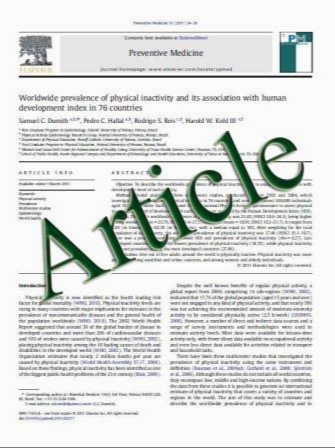Individual and social predictors of screen-viewing among Spanish school children
- نوع فایل : کتاب
- زبان : انگلیسی
- مؤلف : Itziar Hoyos Cillero & Russell Jago & Simon Sebire
- چاپ و سال / کشور: 2011
Description
Many children exceed suggested screen-viewing guidelines and this is likely to be a risk factor for obesity. Understanding the predictors of screen-viewing may be the first step in designing interventions that target these behaviours, but there is lack of information on predictors among Spanish children. This study examined associations between individual, friend and family based social variables and screen-viewing behaviours, and how these associations differ by age and gender in a sample of Spanish children. Participants were 247 primary school-aged and 256 secondary school-aged children and their parents. Children reported time spent in screen-viewing and information about individual and friend and family based social variables. Body mass index was assessed and children were classified using International Obesity Task Force cut-off points. Parents reported sociodemographic characteristics and family co-viewing practices. Lower self-efficacy for reducing screen-viewing (console playing p<0.05; overall p<0.01), stronger sedentary group-norms (TV p<0.001; console playing p<0.05; overall p<0.05) and stronger social reasons (console playing p<0.05) were associated with higher screen-viewing. For younger children, parental screen-viewing rules appeared to be significant predictors while family co-viewing practices were significant predictors for older children. Older children (TV p<0.001; console playing p<0.01; overall p<0.001) and males (TV p<0.01; console playing p<0.001; overall p<0.01) were likely to spend more time screen-viewing. Individual and social factors influence children’s screen-viewing and operate differently during childhood. Increasing selfefficacy may be important for screen-viewing based behaviour changes. Friends and parents play a central role, therefore understanding the dynamics of friends and targeting family influences may be critical to the success of interventions to reduce screen-viewing.
Eur J Pediatr (2011) 170:93–102 DOI 10.1007/s00431-010-1276-6 Received: 29 June 2010 / Accepted: 10 August 2010 / Published online: 3 September 2010


